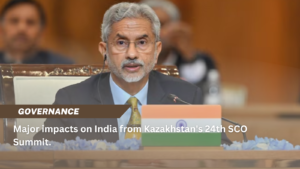The India Gaming Report 2024 unveils India’s ascent as the largest gaming market globally, with 568 million users. While the industry is projected to reach $6 billion by 2028, it grapples with sustainability concerns and regulatory complexities.
The Interactive Entertainment and Innovation Council (IEIC) and WinZO, a top gaming platform, have released the India Gaming Report 2024, a ground-breaking disclosure that sheds light on the country’s explosive ascent to the top of the global gaming market. India has become a major player in the gaming business, with one in five online gamers worldwide coming from a staggering 568 million users.
The report presents an unparalleled picture of growth and promise in the Indian gaming industry, having been revealed at a high-profile event in New Delhi. Given its recent exponential growth, projections show that the Indian gaming business is expected to be valued at an astounding $6 billion by 2028.
According to the report, a number of important variables are responsible for this amazing increase. With prices as low as $0.17 per gigabyte, high-speed internet is now widely available, and 820 million people own cellphones, which has made gaming more accessible to people in both urban and rural areas. Furthermore, the country’s eager hunger for gaming amusement has been spurred by India’s youthful demographic dividend, which includes over 600 million young people, as well as rising disposable incomes.
The report also provides insight into the rapidly growing Indian gaming market, where there were just 25 gaming companies in 2015 but by 2023 there were over 1400. The rapid growth of in-country game production highlights India’s rise to prominence as a global centre for innovative and creative gaming.
Though its successes are being celebrated, the Indian gaming industry still confronts a number of obstacles that could prevent it from growing sustainably. A primary concern is sustainability, as the sector is responsible for 3.7% of greenhouse gas emissions resulting from “internet pollution.” A further major threat to the industry is the lack of financial literacy, complicated regulations, and worries about data security.
The research makes several recommendations to deal with these issues and guarantee the gaming industry’s continuous expansion. These include developing a global gaming cluster backed by supportive policies to support startups and talent development, utilizing green innovations and virtual environments to promote sustainable gaming practices, and giving research and development initiatives a higher priority to improve online safety and digital literacy.
To overcome the obstacles in the way and take advantage of the numerous chances for expansion and innovation, stakeholders in the gaming industry in India must collaborate in order to continue breaking new ground.

















